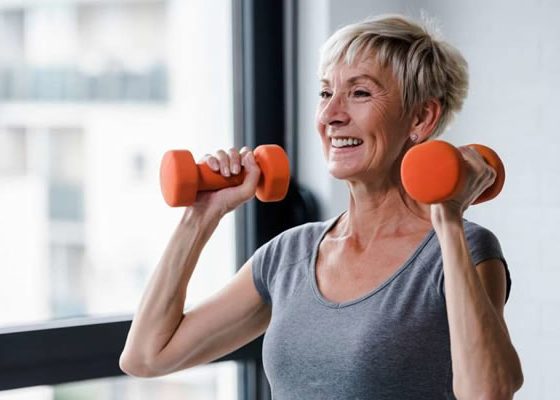Stationary bicycling is a good way to get some cardio exercise without a lot of impact on your knees, hips, or back. Whether you enjoy a leisurely ride on a recumbent stationary bike while reading a book or you push hard in a cycle class, time spent on a stationary bike helps combat a sedentary lifestyle.
The Many Benefits of Indoor Cycling
The main benefit of indoor cycling is the strengthening of the heart, which aids overall fitness and health. Like other forms of exercise, stationary cycling comes with multiple benefits.
Burns Fat
When combined with a caloric deficit, stationary cycling can help you lose fat – especially when your ride includes interval training. As you lose fat, you will lose inches but may not necessarily notice a change on the scale, especially if you’re gaining muscle. Instead, you’ll notice your clothes fit better and may even notice deposits of fat shrinking (such as in the belly region). If burning fat or is your goal, figure out your target heart rate for fat loss and monitor it as you ride:
- Take 220 and subtract your age.
- Take the number from the equation above and find 60-70% of that number – this is your “fat burning” heart rate zone.
Increases Leg Strength
Cycling utilizes the body’s largest muscle groups: glutes, quadriceps (the thighs) and hamstrings. By riding a stationary bike, you are able to target the aforementioned muscle groups and improve blood flow to each. In addition, indoor cycling helps tone your calf muscles and strengthens your tendons, which improves overall leg strength. Indoor cycling should be done with additional strength work if your goal is to get stronger or get larger muscles. Cycling should be considered a cardio workout – to build significant strength, head to the weight room.
Aids Cardiovascular System
Indoor cycling is an ideal exercise to improve your cardiovascular system. Your heart and lungs make up your cardiovascular system, and the fitter you become, the more efficiently they work. Consistent cycling improves blood flow throughout your body and increases the speed by which oxygen is distributed. Over time, this exercise will help improve heart and lung performance and increase your overall fitness level.
Improves Posture
In addition to improving your cardiovascular system, cycling also encourages the use of stabilizer muscles found in your trunk, hips and shoulders. Improvement of these muscles helps to enhance body alignment and posture. To gain this benefit, take care to not hunch over and aim to maintain a neutral spine throughout your workout.
Reduces Risk of Injury
Indoor cycling is considered a non-load bearing exercise, which means your body does not have to bear the burden of supporting all your weight throughout your workout. Since the majority of these exercises are done while sitting, the pressure is taken off your joints and you reduce your risk of injury. This is something that is not accomplished when participating in other cardio activities such as running. Using a stationary bike also reduces the risk of falling or accident from outdoor biking, but gives you much of the same benefits.
Miscellaneous Benefits
Other benefits of indoor cycling include:
- Not having to worry about poor weather conditions
- Not having to purchase expensive workout equipment
- Controlling your own aerobic output
Ways to Maximize Stationary Bicycling Benefits
To maximize the benefits achieved by cycling, consider these five tips:
- Adjust your bike according to your height. Set the saddle to your hip level to ensure your knees are not bent or locked straight when peddling.
- Choose proper fitting shoes. Experts recommend stiff-soled fitness shoes rather than soft running sneakers. If you find that you enjoy cycling, you might consider investing in special cycling shoes that clip on to the bike’s pedals.
- Always have a bottle of water. It’s a good idea to bring a bottle of water to the gym and take frequent drinks while you ride. Indoor cycling offers a high intensity workout and most participants sweat profusely during the activity. Having water on hand will help you remain hydrated.
- Bring a towel. You will need it to wipe sweat from your body and the bike handles during your workout.
- Don’t force yourself. Doing so may cause painful injuries.
Pedal to Better Health
Indoor cycling can be a convenient way to get cardio exercise without putting a lot of stress on your joints. Give yourself time to adjust to the saddle as you may experience some soreness after your first workout – this soreness goes away as you get accustomed to the saddle. The more you ride, the easier it will get.



